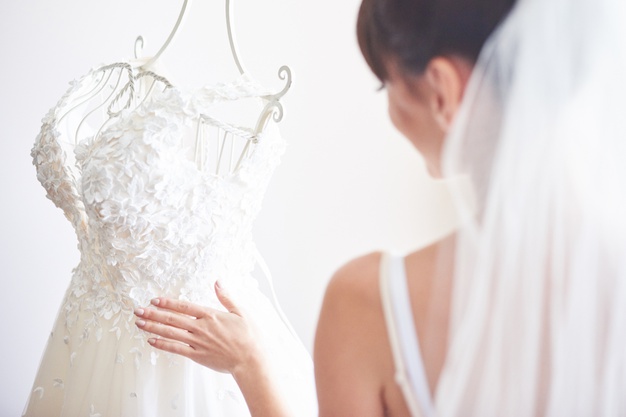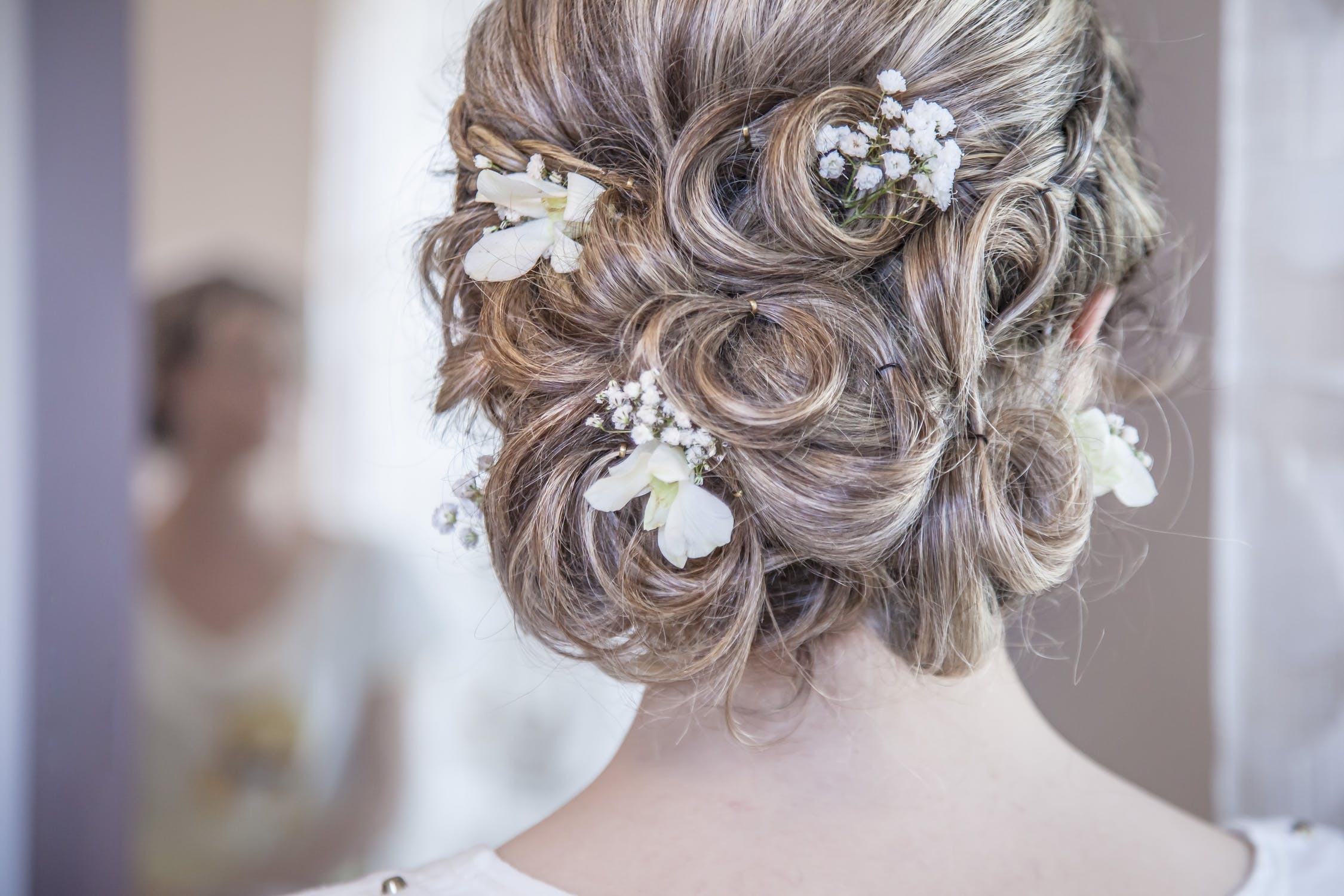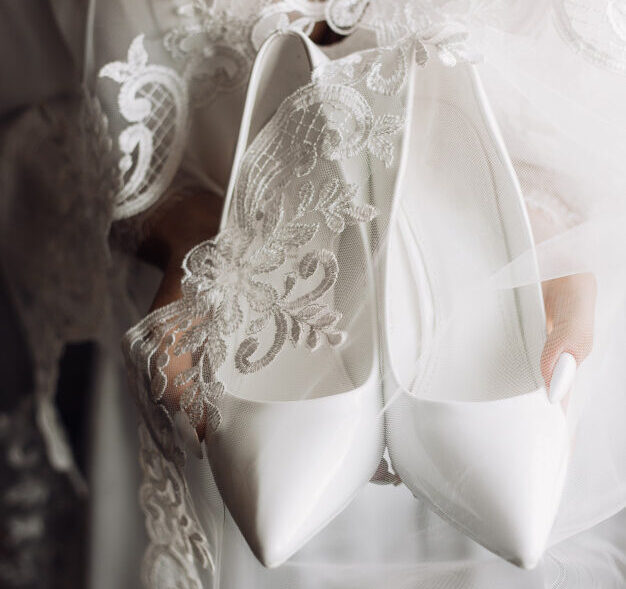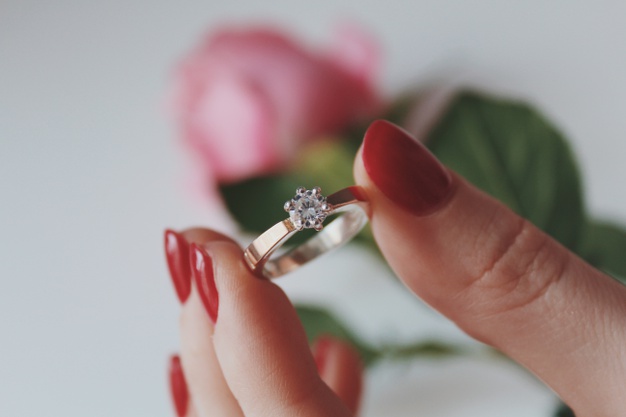What shall I wear? This is the first question any future bride asks herself when she starts thinking about her wedding day, fully aware that this decision is at the heart of making her the star of an unforgettable day. Even though almost all of us have dreamt since we were little of our “big white wedding” with a gorgeous unforgettable dress, my advice is to avoid going over the top and to aim for simplicity.
Remember that the dress should highlight the brides most beautiful features, creating balance with her figure and, most importantly, emphasizing her natural elegance and way of being… do not try to astonish with special effects and gimmicks.
In ancient times, Greek brides, for example, wore their traditional tunic enhanced only with the addition of special cords and their hair was simply adorned with a myrtle tiara.
Roman brides, on the other hand, wore a saffron-colored cloak over a white tunic which was tied at the waist with a double knotted belt, which would then be untied by the groom the evening of the wedding.
On their heads they wore the “flammeum”, a red veil held in place by a crown of flowers, which was considered to be a symbol of modesty. In the Middle Ages, women wore wedding dresses which were rich and ornate, while eighteenth century brides wore elaborate dresses with splendid floral motifs. The Empire-line style of wedding dress, typically in pastel shades, came into fashion during the Napoleonic period, while white wedding dresses only appeared for the first time in the nineteenth century.
Leafing through the pages of current fashion magazines, we see that 21st century style trends incorporate all manner of colors, from soft tones like pink, blue, teal and light yellow, to strong accent colors like reds, gold and silver.
In my opinion, traditional white, with its various shades from beige through ice, is the color best suited to a wedding ceremony…. The “warm” whites, tending towards ivory or pink, are perfect for highlighting dark complexions and olive skin, while “cold” whites, including pearly grays and blues, go particularly well with fair complexions and blond or red hair.
As for the choice of style, slim brides will enhance their figure using fluid lines created with soft fabrics which slide over their form without drawing it in, such as lace or silk. Sculpting with voluminous fabrics such as organza, mikado, Sangallo or taffeta is also effective. For the more curvaceous bride, soft flowing layers in georgette, satin or cady work particularly well, as well as Empire-line styles which widen slightly as the dress descends, concealing any curves along the way.
If the wedding takes place in winter, there is no need for heavy fabrics or princess-style fur cloaks! Just cover yourself adequately under the dress and wear a cashmere scarf or a warm stole to cover your arms and shoulders.
Less youthful brides should consider avoiding a long white dress, but rather choose shorter styles, or perhaps a suit with a skirt or elegant trousers.
Of importance for everyone!!! Don’t forget to wear something old, something new, something borrowed, and last but not least, something blue. A little superstition for a dash of good luck… there’s no harm in trying!
Some more tips:
- Avoid heavy makeup. Ensure your make-up is light and very natural, and in the summer a hint of tan won’t hurt.
- Avoid lavish jewelry and rings … the only ring on your finger should be your wedding ring; earrings are fine but only if they are small, and never hooped.
- Avoid red nails. Use only clear or light pink nail polish.
- Avoid wearing glasses, especially if you’re wearing a veil… they can be the cause of unfortunate tangles!
- Do not bring a handbag to the Church… it is entirely pointless!








